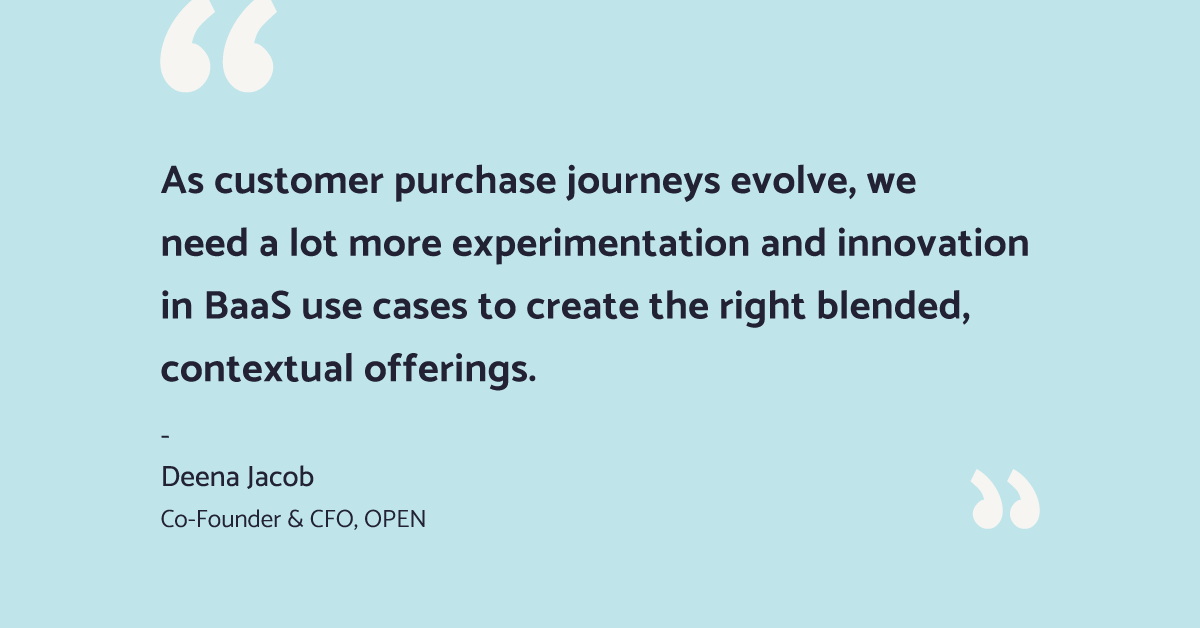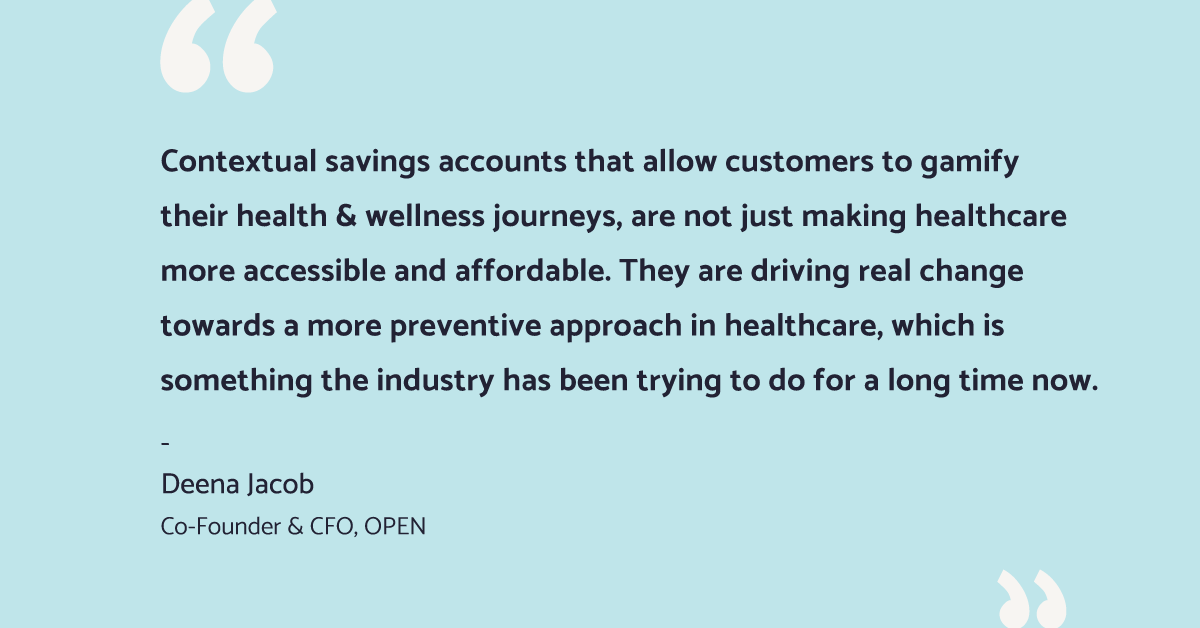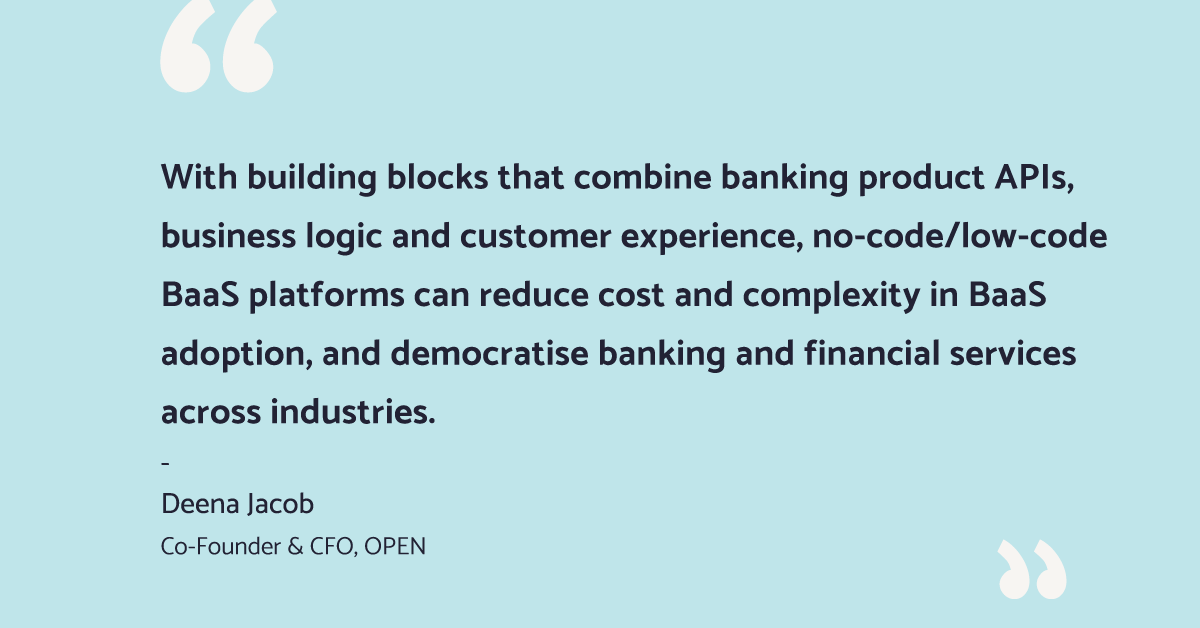With an estimated 7.8 billion smartphone users globally by 2028, and an expected digital banking penetration of 53% by 2026, customer expectation of embedded financial experiences is only going to get higher. Banks need a lot more experimentation and innovation in BaaS use cases to capture this demand with the right blended, contextual offerings.
“Banking is no longer somewhere you go, but something you do.” Aptly put by the fintech expert Brett King almost a decade ago, King’s statement predicted not just the digitalisation of banking transactions, but also the rise of the ‘banking as a service’ model that would compel banks to rethink their entire approach to product distribution and customer acquisition.
Push, Not Pull
The need for banks to embed products at the customer’s point of need is well-established by now. Customers no longer visit banks, physically or online, seeking products. They prefer to consume banking solutions within the context of their need. Banking as a Service (BaaS) allows banks to embed their licensed products (accounts, payments, lending, etc.) in customer purchase journeys across non-banking contexts. It also brings in elements of self-service and automation that help a bank deliver the right kind of customer engagement and delight.
Embedded finance experiences like in-app account opening (offered by non-banks), contextual credit at point of purchase, or early wage access within HRMS platforms, are some of the more recognised examples of BaaS today.

Advantage BaaS
Over the last two to three years, the adoption and popularity of contextual banking has driven the need for BaaS in various segments and transactions. According to the latest Gartner Hype Cycle for Digital Banking Transformation, BaaS will hit mainstream adoption within two years. Gartner predicts that 30% of banks with more than USD 1 billion in assets will launch BaaS for new revenue by 2024.
Primarily seen as an advanced distribution play for banks, BaaS is moving the needle on some of the key friction points in traditional banking models:
- Higher customer acquisition, at lower costs: BaaS partnerships scale a bank’s reach and distribution, while digital technology and automation drastically reduce customer acquisition and onboarding costs. However, this model does involve an increase in compliance and management effort, so effective productisation of the bank’s BaaS offerings is critical.
- Newer customer segments: BaaS enables banks to tap new customer segments that may not have previously been attractive or cost-effective. For example, merchant cash advances delivered within merchant platforms, or in-app working capital loans delivered by accounting platforms are helping banks to address the micro and small end of the micro, small and medium enterprise (MSME) spectrum cost-effectively.
- Richer customer data: BaaS gives banks access to richer and more contextual customer data, enhancing customer profiling, intelligent bundling and cross-selling.
- New revenue streams: Apart from growing a bank’s customer wallet-share with more contextual engagement, BaaS opens up completely new revenue streams like subscription fees through partnerships.
No-code/Low-code BaaS Platforms Are Democratising Banking & Finance
The potential for every business to offer banking and financial services to their customers is truly game-changing, and deserves all the excitement it has generated. For example, health, wellness and insurance-related businesses have been amongst the fastest adopters of embedded finance. Use cases like contextual savings accounts, where customers are able to gamify their wellness behaviours and save systematically towards health expenses, or, personalised risk premiums based on lifestyle data, are not just making healthcare more accessible and affordable. They are driving real change towards a more preventive approach in healthcare, which is something the industry has been trying to do for a long time now.

However, the devil, as always, lies in the details. The implementation of a BaaS partnership is an expensive and effort-intensive process, with several technological, business and regulatory complexities involved. As a result, most businesses are unable to invest in the kind of talent and resources required to activate a partnership with a bank. This is not only restricting the adoption of BaaS, but severely limiting the kind of experimentation and scale we need to keep step with evolving customer behaviour.
No-code/low-code BaaS platforms offer ‘building blocks’ that can be used easily by businesses without any technological know-how. No-code capabilities allow partners to drag-and-drop co-branded accounts, cards, payments and lending products into their app or platform, and activate the products within hours—without a single line of code. Low-code environments offer pre-built templates that allow partners to customise the flows and interfaces of the products (to a limited extent) and then embed them into their app or platform using just a few lines of code.
With each building block representing a ready combination of banking product APIs, business logic and customer experience, no-code/low-code platforms can remove the cost and complexity barriers to adoption, and democratise banking and financial services across industries.
Improving Agility & Innovation with No-Code/Low-code Platforms
Rapid smartphone and digital banking adoption is driving businesses and fintechs to experiment with more segment-specific contexts. An in-app savings and rewards account for teens on a skill-building platform; a neobank for residential societies on a property management app; or a supply chain finance solution on a pharma merchants’ app are all emerging use cases that show the potential for BaaS to address niche and diverse customer needs.

No-code/low-code BaaS platforms enable experimentation by offering an environment that supports agile builds, easy and economical testing, and fast market launches. By masking the technological and banking-related complexities behind a more visual mode of implementation, no-code/low-code platforms also make it easier for banks, businesses and fintechs to work together and focus on the customer experience to be delivered. This is a key challenge today in BaaS conversations where solutions are to be built from scratch; involved parties can take several weeks to arrive at a common plane of discussion. Then too, customer experience can often become an afterthought to the more complex build work, leading to suboptimal results in terms of engagement and revenues.
Conclusion
No-code/low-code BaaS platforms take away the need to reinvent the wheel when it comes to integrating banking products and services in an efficient, secure and compliant manner. Businesses should be thinking about the best customer experience, and banks should be able to focus on collaborations to acquire long tail customer segments cost-effectively. By experimenting and innovating together to create the best blended experience for customers, banks and businesses can finally achieve the true potential of the ‘banking-as-a-service’ model.
Note: A version of this article was originally published as an opinion column in The Economic Times.
References:
- Ericsson.com; Mobile Subscriptions Outlook; https://www.ericsson.com/en/reports-and-papers/mobility-report/dataforecasts/mobile-subscriptions-outlook
- Juniper Research; Press Release; https://www.juniperresearch.com/press/over-half-global-population-digital-banking
- Gartner; Press Release; https://www.gartner.com/en/newsroom/press-releases/2022-09-12-gartner-says-banking-as-a-service-will-hit-mainstream








